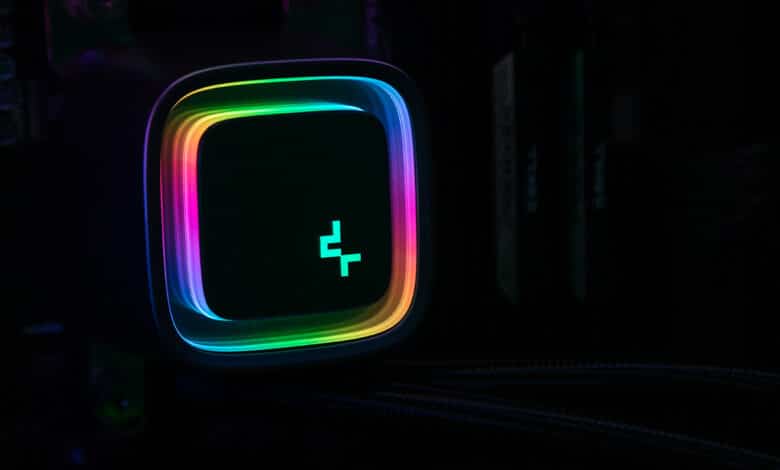
A few years ago, all-in-one (AIO) water cooling systems were considered a niche product for enthusiasts. There were only a few brands with a relatively expensive selection. But now AIOs have become the standard, becoming more affordable and widely used thanks to their fairly high performance, clean looks and easy accessibility to motherboard components. For mounting purposes, most current cases also have space for the corresponding radiators. Almost every well-known manufacturer of PC components now has AIO water cooling systems on offer, and DeepCool has of course been in the game here for quite some time.
With the new LS series DeepCool tackles a typical problem of water cooling systems: Cable management. It is not uncommon to have to deal with cables for each fan, for the pump, partly for the control via programs and last but not least for each RGB component. Ending this cable chaos was one of DeepCool’s goals for the LS series. We got a chance to put the largest version of the coolers, the DeepCool LS720, to the test.
DeepCool LS720 Specifications
| Socket compatibility | Intel LGA2066 / 2011-v3 / 2011 / 1700 /
1200 / 1151 / 1150 / 1155 AMD sTRX4 / sTR4 / AM5 / AM4 |
| Radiator | 402 × 120 × 27 mm aluminum |
| Pump unit | 86 × 74 × 57 mm |
| Hose length | 41 cm |
| Pump | 3100 RPM, 19 dB |
| Fan | 3x 120 mm, 500 – 2250 RPM |
| Fan volume (maximum) | 32.9 dB(A) |
| Fan airflow | 85.85 CFM |
| Fan type | Fluid Dynamic Bearing, RGB lighting |
| Warranty | 5 years |
| Price | UVP 144,90€ |
Packaging and scope of delivery
The packaging of the DeepCool LS720 is big! However, that’s no surprise when the radiator is already around 40 cm in length. In terms of design, the packaging is similar to the DeepCool AK620 in a newer, more serious design. A cardboard frame with a product imprint is tucked around a brown cardboard box. Once opened, you’ll find a tray with the radiator connected to the pump unit with two hoses. Also, three non-factory screwed fans and a box with the instructions and mounting hardware for many different sockets – including Threadripper platforms.
Then there’s an extension cable and an adapter cable. Everything is neatly wrapped in plastic bags – connectors for the different sockets, the cables, the screws, the radiator, the pump unit, each fan. So many bags would not have been absolutely necessary. At least the outer packaging does without large foam parts. The insert is made of quite soft cardboard in the style of an egg carton. This is meant positively in terms of reducing plastic packaging.
Design and workmanship
Fans
The fans that come with the DeepCool LS720 are not really torsionally stiff. Overall, the workmanship is okay – there is no feeling of premium fans. A nice detail are the rubberized corners, which dampen vibration noise, but are difficult to clean from dust, which can dampen the visual impression a bit. At first glance, they look like the RGB variant of the fan found on the DeepCool AK400, with the kinship also confirmed by the product name FC120 FDB, but the DeepCool LS720’s fans can spin faster, get a bit louder at full power accordingly, and therefore perform even better.
But here we come directly to the special feature that makes the DeepCool LS720 stand out among the competition in its price range: The fans can be connected to each other with the cables that are barely longer than a fan is wide. Thus, they can form a fan chain that only needs to be controlled with one cable, which should significantly reduce cable clutter, because usually you need to bring two cables each per RGB fan to corresponding connectors.
Wait – only one cable for RGB and fan control on the DeepCool fans? Yes, those are proprietary connectors, of course. The package also includes an extension cable for these connectors and an adapter to regular ARGB connectors and a PWM fan connector. So in principle at first a bit of a shame, because without this adapter the fans are of course not usable, but ultimately this is very purposeful for the reduction in cable clutter and in the end the fans end up with the adapter but on normal connectors and no proprietary controller is needed.
The pump
The pump unit of the DeepCool LS720 comes in a nice mirror look. You just have to be careful, because fingerprints are immediately visible with it. RGB components with an “Infinity Mirror” effect are also installed here. These have the same connector as the fans and so that is simply connected in series with the fans. Other than that, you’ll only find a second cable on the pump unit, which connects to the pump header (or, if not available, to a fan header on as full power as possible) on the motherboard with a normal 3-pin fan connector.
The logo on the front of the pump unit can be rotated and you could also add your own design by using a blank supplied plate. A suitable CAD file for customization can be found on DeepCool’s product page. A gimmick that requires a certain professional skill and such an effort that I can hardly imagine that many regular users will use this feature, but creative minds can have fun with this, for example to immortalize their own logo on the AIO pump.
A nice detail are the two holders for the hoses to the radiator. With these two holders, the hoses are kept reasonably parallel in shape.
The radiator
The radiator looks inconspicuous at first and just like other radiators look, but there is something on one side that stands out that you haven’t really spotted on other manufacturers yet: some sort of pressure equalization mechanism. DeepCool calls this “anti-leak tech.” Ultimately, it’s a kind of rubber hose that compresses when the pressure inside the AIO water cooler increases – which is common when the temperature rises. This is to prevent over-pressurization that could cause the liquid to squeeze out. I have to admit that I personally haven’t come across such a case yet, but it’s still an extra safety precaution that’s nice to have, after all, free liquids inside the PC really wouldn’t be desirable.
Deepcool LS720 operation
The RGB fans are very evenly lit – and happen to perfectly match the look of the case fans on the test system, which sits in a Fractal Design Pop XL Air. The lighting is bright and very respectable on the pump head as well, though the infinity mirror effect doesn’t quite have the deep impact one might expect.
Installation and control
Installing the DeepCool LS720 all-in-one water cooler is not difficult in principle – but it differs significantly from socket to socket. One thing is always the same: First, you have to screw the brackets onto the pump unit. There are different brackets for the different sockets here, and you can attach them accordingly depending on the orientation you want so that the pump unit is rotated the way you want it. However, DeepCool recommends having the tubing extend downward from the processor for the best heat transfer and thus the lowest temperatures.
Radiator and fan
Now – depending on the case and the planned radiator position – the fans should be screwed to the radiator, for which the long screws are included that go completely through the fans with their rubber-insulated corners; then the radiator can be attached to the case with smaller screws. Alternatively, the long screws first go through the fans, then through corresponding openings on the case, and then into the radiator. The former is common for mounting at the top of the case, and the latter is common for mounting in the front of the case. In the Fractal Design Pop XL, only mounting in the front remains. At least the hoses are long enough to move the radiator inlet and outlet to the bottom, which reduces potential “splashing noise” compared to hose placement at the top of the radiator.
The fans are now connected in series. Here, the respective connection is directly next to the place where the cable also comes out. Since the cables should not be visible, it should be noted that they are screwed onto the radiator rotated out of sight. The pump unit also has a corresponding cable that should be connected. This is a little tricky because once the radiator is screwed in place, it’s hard to get to the back. Ergo, you should do this beforehand. Then, however, when attaching the pump unit, pay good attention to where the cable is located so that it is not in the way. Or simply visually disturbs. That it ends up visually disturbing somewhere is virtually pre-programmed, though, since it has to be led almost from the center of the mainboard to the outside.
Pump unit
Then it’s the turn of the DeepCool LS720 pump unit assembly. This is easy to follow in the instructions based on the pictures, especially since the parts are packaged to fit according to the sockets. For Intel, a backplate is also included that can be switched between older sockets (115x and 1200) and LGA 1700. For AM4 / AM5, the regular AMD backplate is used. The general procedure is to first screw on spacers, then put on the pump unit, and then screw it on the spacers.
By the way, the thermal paste is applied directly to the pump unit. So you can’t forget about it and the installation is easy even for beginners. However, in order to re-install the DeepCool LS720 later – for example, if the system is moved to a new case, you upgrade the processor or if you want to use the cooler again in a new system – you have to buy additional thermal paste in the tube.
After that, the rest can be wired up. The pump unit now has only one free 3-pin connector, which belongs to the pump header on the mainboard. If such a connector is not available, it goes to a regular fan connector. This should be set to full power in the BIOS to ensure correct operation.
Now the last free cable of a fan is connected to the corresponding adapter, which supplies the fans with power via SATA, PWM signal via the motherboard and RGB signals via a suitable connector. Overall, a really clean affair. In comparison, I have an AORUS Liquid Cooler 360 here, which with three fans alone has six connections that have to be individually wired somewhere, while out of the pump unit all the connection cables come out and have to be routed. This is much more convenient and cleaner with the DeepCool LS720. In addition, the DeepCool cooler does not require a USB header and control runs through regular channels, not proprietary software.
The recommended mounting with the pump unit’s hose outlet facing down actually has the problem that the cables to control the pump unit are also quite centered on the motherboard, making unobtrusive cabling difficult.
Performance and volume
Let’s get to the really exciting part. What you expect from a CPU cooler is the best possible cooling performance. With a large radiator area, like on the DeepCool LS720, you hope for low noise in the process.
About the test system: The DeepCool LS720 was installed in the front of the Fractal Design Pop XL Air. The pump unit was aligned according to DeepCool’s recommendation and set to an AMD Ryzen 9 5950X. This is overclocked so that it draws around 140W of power in Cinebench according to AMD Ryzen Master. As a comparison, a strong air cooler, the DeepCool AK620, is used, with which the same tests were made in advance.
About the test procedure: In order to keep variable influences as low as possible, all fan automatics were deactivated. The case fans always run at full power. The fans of the DeepCool LS720 were tested on three levels: Once at minimum speed at around 465 rpm, once at around half maximum speed, which is around 1140 rpm, and once at full power, which is around 2200 rpm. In each case, Cinebench is started in a continuous loop and the average temperature is measured for one minute after about a quarter of an hour of heating up. To compensate for fluctuating room temperatures, the delta, i.e. the difference between room and processor temperature, was measured here.
Deepcool LS720 test
| Temperature delta DeepCool LS720 | Temperature Delta DeepCool AK620 | |
| Minimum speed | 48.8°C | – |
| 50% turning power | 38.9°C | 53.8°C |
| 100% turning power | 36.5°C | 46.8°C |
Analysis of Deepcool LS720 test results
Sure – the DeepCool LS720 clearly beats even such a powerful air cooler as the AK620. Even at minimum speed, where the fans are barely audible, the LS720 is only minimally weaker than the AK620 at full speed, where the latter is very audible. I did not test the AK620 at minimum speed because its heat dissipation was already borderline at 50% under the high load.
The range around 50% is the sweet spot of performance and volume. The LS720’s fans hardly seem louder than at minimum speed, but the performance jump is clear. If you assume a room temperature around 25°C, you only end up just below the 80° limit with the AK620. That’s okay and below the limit of power throttling, but already quite warm. The LS720 only just cracks the 60°C mark. And that under Cinebench full load and a permanent power consumption of around 140 watts! That’s decent!
On the other hand, the step to full fan power on the LS720 is relatively disappointing. Here, the fans reach a rather high noise level and the practical temperature gain is only minimal. Here, the performance gain on the AK620 is greater and both fans are quieter and better dampened due to their location in the middle of the case.
Overall, however, the performance of the LS720 is already so much higher than that of the AK620 at medium speed. Thus, you already have a quite quiet system here with a speed around 1100. If you now set an automatic fan so that it is at an inaudible 25% PWM in idle mode and goes up to a maximum of 60% under high load, you should be able to get the optimal ratio of volume and performance.
A quick look in the direction of the pump: It is audible. Not aggressive, not really loud, but with otherwise quiet fans and a zero fan mode of the graphics card at idle, you can notice it.
Summary of the DeepCool LS720 review
The DeepCool LS720 is a strong all-in-one water cooler with some niceties, such as making cabling much easier compared to most competing products. The design is good, the volume in the mid-range of the fans is very good, and the performance keeps even very power-hungry processors under control. Even as a staunch air cooler advocate, I have to say: there is no air cooler here that can match the LS720 in terms of performance. Price-wise, the DeepCool LS720 is also really good considering its features with the daisy-chain fans, RGB lighting, and pressure balancing.
DeepCool LS720
Workmanship
Design
Mounting
Performance
Value for money
90/100
The DeepCool LS720 is a pleasantly wired high-performance water cooler that doesn't allow itself any real weaknesses, looks good and remains reasonably priced.
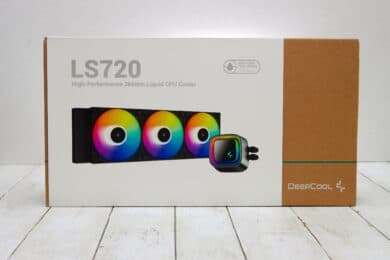
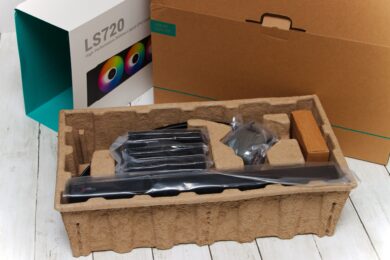
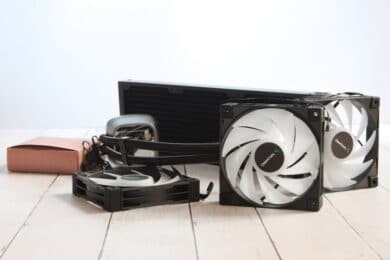
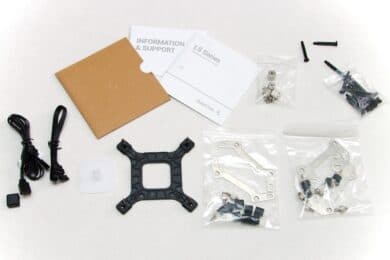
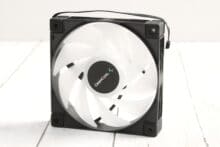
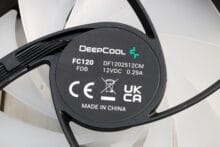

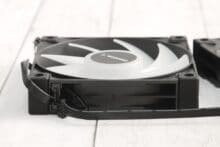

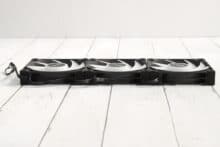
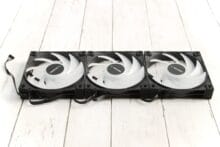
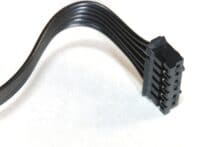
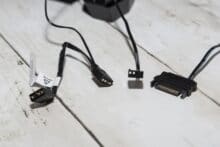

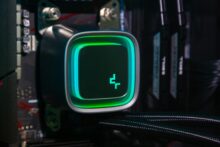
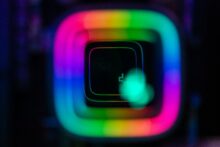
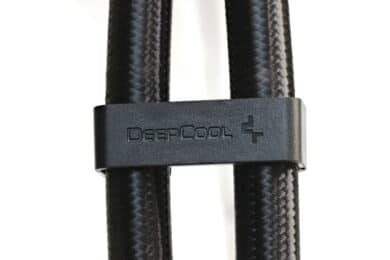

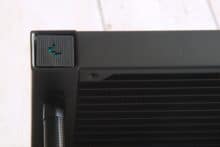
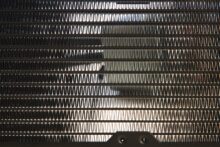
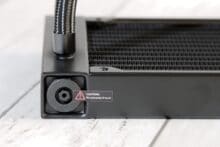

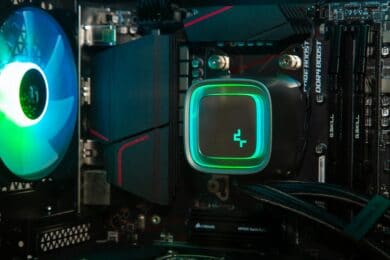


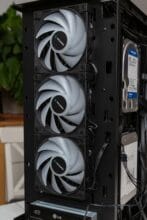
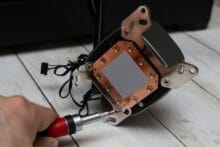

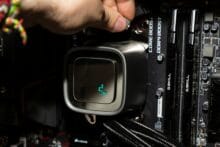
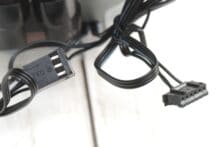
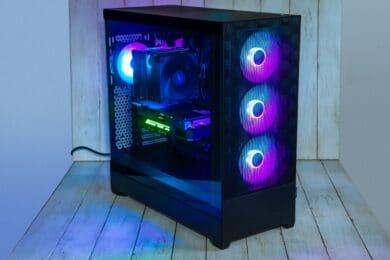
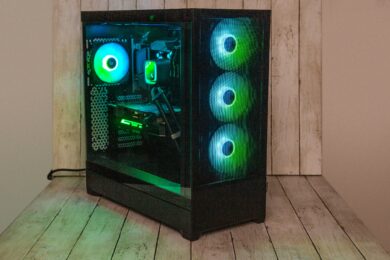

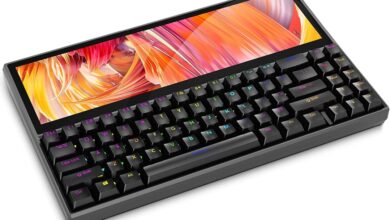
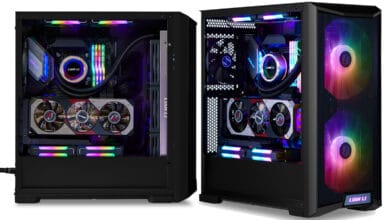
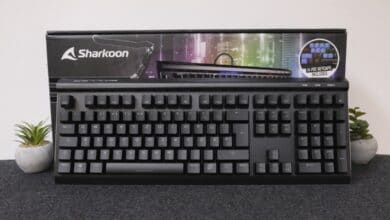
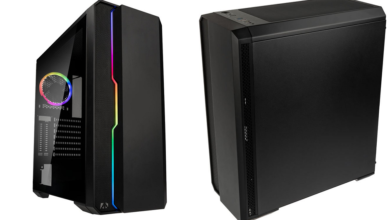
No replies yet
Neue Antworten laden...
Gehört zum Inventar
Beteilige dich an der Diskussion in der Basic Tutorials Community →